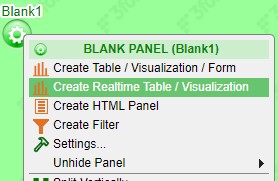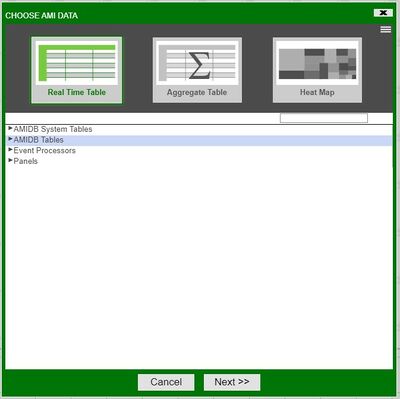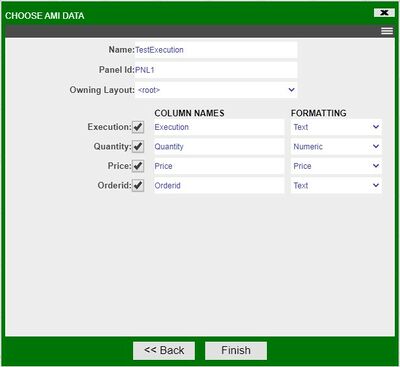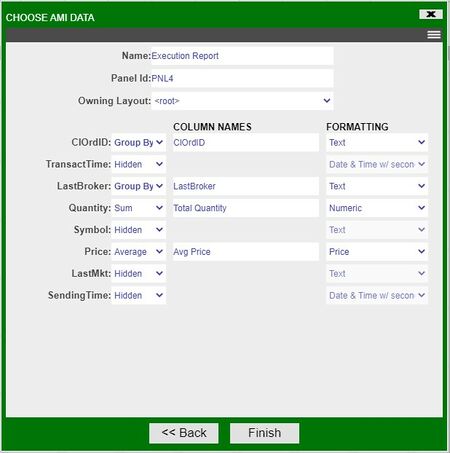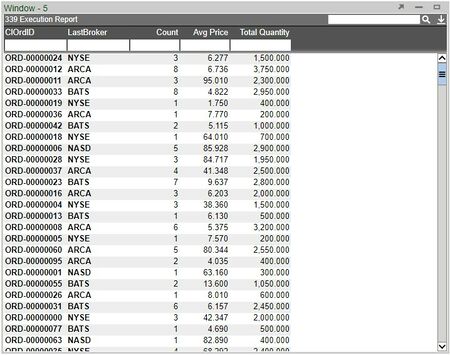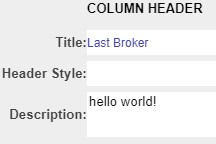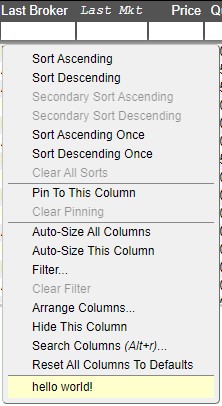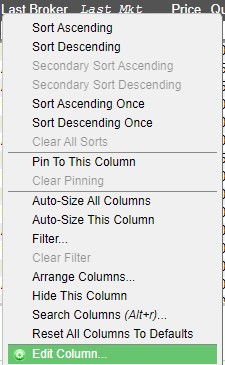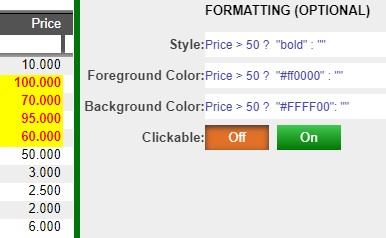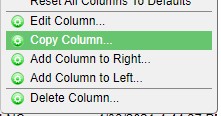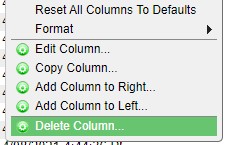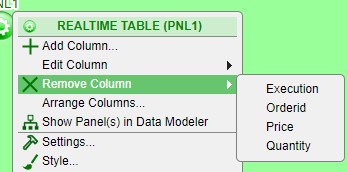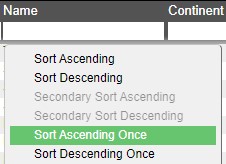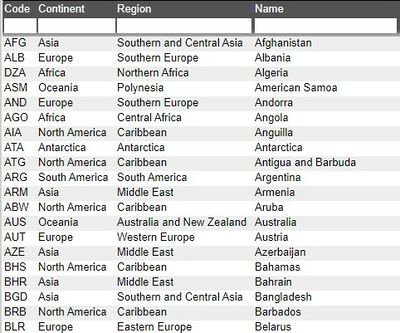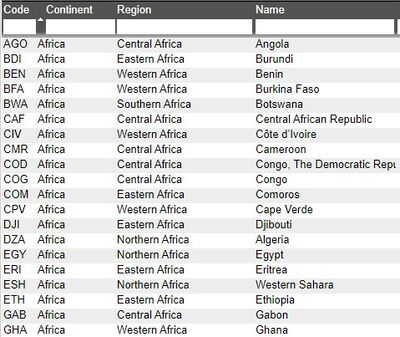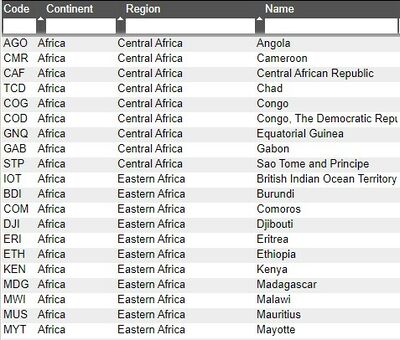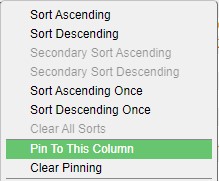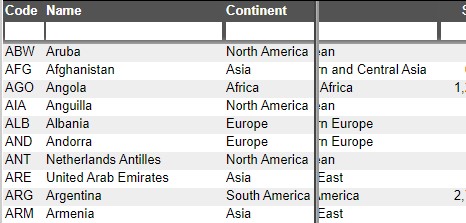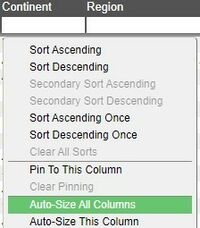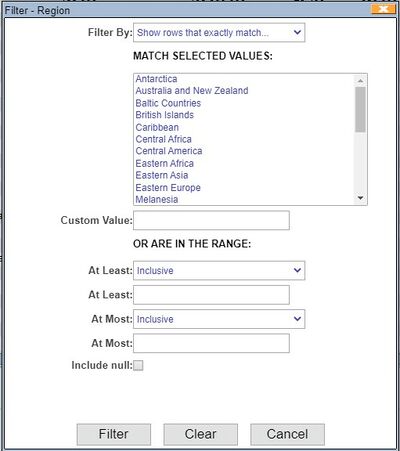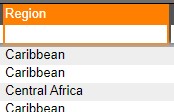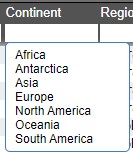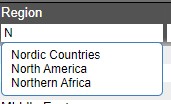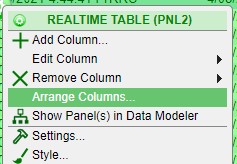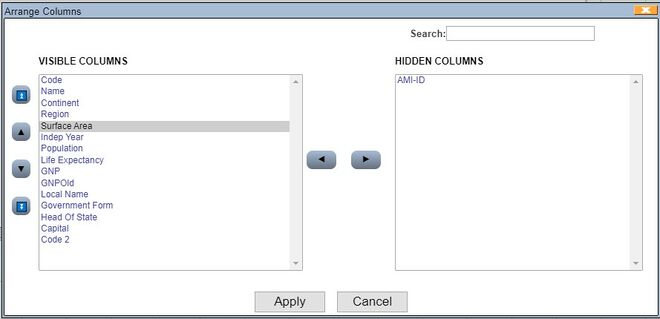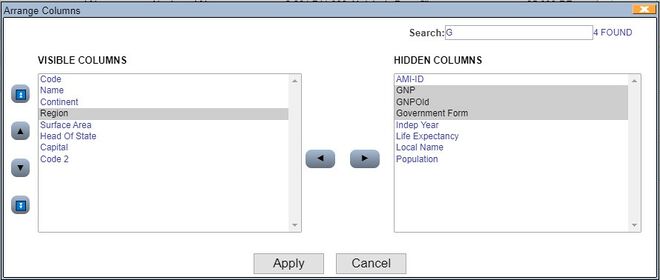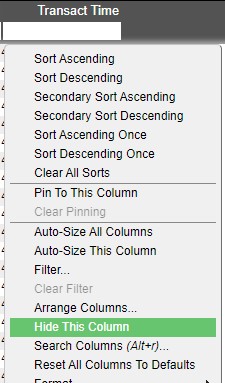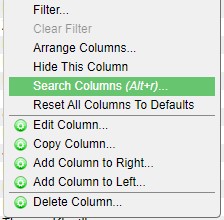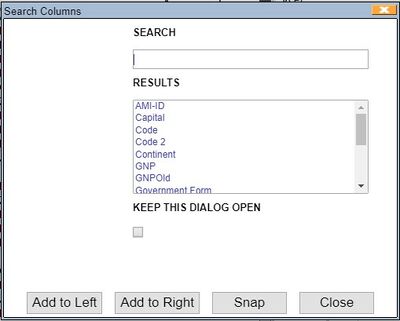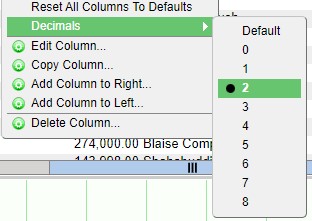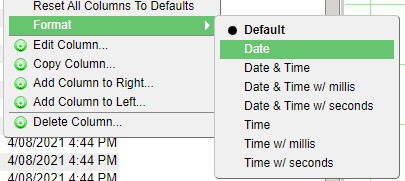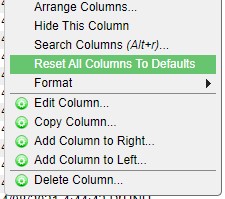GUI Tables
There are two main types of visualizations in AMI. Real-time visualizations and static (datamodel-based) visualizations.
Real-time Tables & Heat Maps
Real-time panels connect directly to the AMI Real-time Database (AMIDB) and display data as it is updated in the database. With real-time panels, there is no need to refresh as any update is immediately pushed to the visualization.
There are three different types of real-time visualizations: tables, aggregate tables, and heat maps.
Tables
Real-time tables are useful when it is necessary to get a tabular view of the data that is being pushed to the AMI real-time database or to view the changes that are being made to the existing data. Tables can be modified in order to best present the data (discussed in the Columns section).
To create a real-time table, click on the green configuration button on a blank panel and select Create Realtime Table/Visualization from the menu. This will open up the real-time visualization wizard.
Expand the AMIDB Tables tree, select the table you would like to build the table and click next. In the last step of the wizard, modify the table if any changes are necessary. Click Finish to build the table.
Aggregate Tables
Aggregate tables are real-time tables that can be used to obtain a summary of data grouped by certain variables. Aggregate tables will integrate changes to the data in real-time.
To create a real-time table, click on the green configuration button on a blank panel and select Create Realtime Table/Visualization from the menu. This will open up the real-time visualization wizard. In the wizard, select the Aggregate Table icon and the data you would like to aggregate. Click Next to view the aggregation options.
In the last step of the wizard, choose the variables to Group By (or hide) and the variables to perform aggregations on. The types of aggregations available are: Count, Sum, Max, Min, & Average. Click Finish to create the aggregate table.
The group by columns will be in bold.
Aggregate Table Settings - Grouping Columns for Aggregation
A unique setting found in aggregate tables is the option to choose how hidden grouping columns affect the aggregation.
When set to Hidden and Visible, the table will consider all grouping columns (including hidden columns). When set to Only Visible, hidden grouping columns will not affect the aggregation.
This is useful when you would like to temporarily change the aggregate view without deleting any grouping columns.
The aggregate table when set to Only Visible and CIOrdID is hidden
Columns
Adding, Editing, Copying, & Deleting Columns
Adding
(Note: these options are only available when in developer mode)
There are three ways to add columns in tables
1. Click on the green button to bring up the panel configuration menu and select Add Column
2. Click on a column to bring up the column menu. This method allows you to place the new column in between existing columns. In the menu, select whether to add the new column to the right or left of the selected column
3. Click on an open area of the header in order to bring up the header menu. In the menu, select Add Column.
Add Column menu
| Display | Use variables, operators, functions, and icons to create the content for the column |
| Sorting | Use variables, operators, and functions to apply a sorting to the contents of the column |
| Format | Choose the format of the column (e.g.: text, numeric, time, date, price, etc.) |
| Title | Create a title for the new column. Must be unique from existing columns. |
| Header Style | Apply different fonts, alignments, style, and colors to the column header |
| Description | Add a description/help which can be seen when clicking on the column header |
| Column Position | Drop down list of various positions where the new column can be placed (can also be hidden) |
| Style | Apply a style to the contents of the column (including font and alignment) |
| Foreground Color | Apply a color to the contents of the column |
| Background Color | Apply a background color to the column |
| Clickable | Makes the contents of the column clickable |
Examples
Adjusting header and column styles
Column Description
Editing
There are two ways to edit columns
1. Click on the header of the column to bring up the column menu and select Edit Column
2. Click on the green button to bring up the panel configuration menu. Highlight Edit Column to bring up the list of columns and select the column
Both options will open the Edit Column window, which is the same as the Add Column window.
Example
Conditional Formatting
Formatting can be used to highlight data in specific formats when certain parameters are met. In this example, the Price is set to be in bold red and highlighted if it is greater than $50.
Copying
In order to copy a column, click on the column to be copied and select Copy Column. This will bring up the Edit Column menu. Apply a different name and click Update.
Note: if the column to be copied has any input in its fields, those fields will also be copied.
Deleting
There are two ways to delete a column.
1. Click on the column header and select Delete Column from the column menu. There will be a confirmation prompt before final deletion.
2. Click on the green button to bring up the panel configuration menu. Highlight Remove Column to open a list of all the columns in the table. Select the column to remove.
Sorting
Columns can be sorted in multiple ways
Primary Sorting
Primary sorting will remain in place until it is cleared. Any new data added to the table will automatically be sorted. There are two ways to add a primary sort to a column.
1. Click on a column to open the column menu. Select either Sort Ascending or Sort Descending
2. Hover over the column header - this will bring up the sorting arrows on the right side of the header. Clicking on the up arrow will apply a sort in ascending order & clicking the down arrow will apply a sort in descending order
After applying a primary sort, the corresponding arrow indicating the type of sort will appear in the header
Application of a descending sort
In order to cancel a primary sort on a single column, use the Sort Ascending Once or Sort Descending Once options from the column menu. This will perform a sort which will not remain in place and the primary sort will no longer be applied to the column.
Secondary Sort
Secondary sort can be used to further sort the data based on multiple columns. The secondary sort option will not be available unless there is a primary sort in place on one of the columns.
Example
Table without any sorting applied
Sort Ascending applied to Continent
Secondary Sort applied to Region
Secondary Sort applied to Name
In order to clear all of the sorts on a table, click on any column and select Clear All Sorts from the column menu.
Pinning & Sizing
When working with large tables, it may be necessary to keep certain columns pinned. To do this, select the column to be pinned and select Pin To This Column. That column and every column to the left will be pinned.
The header of pinned columns will be in bold and a vertical line will appear as you scroll to the right of the table.
Use Clear Pinning to clear all pinning.
You may manually resize columns or have it done automatically. To resize any column, hover over either edge of the header, click and drag to the desired size. To have this done automatically, using the width of the longest record(s) in the column(s), select Auto-Size This(All) Column(s) from the column menu.
You can also click on an open area of the header in order to bring up the header menu. In the menu, select Auto-Size All Columns
Filters
To apply a filter to a column, click on the column header and select Filter from the column menu. This will open the Filter window.
| Filter By | Drop down list to determine whether or not to show/hide based on exact/pattern match |
| Match Selected Values | List of all of the unique records in the column. Select or more records to filter on. |
| Custom Value | Input specific value to filter on (may be a record that is not in the column yet) |
| At Least | Include or Exclude record in the At Least field |
| At Least | Input specific value to be the minimum |
| At Most | Include or Exclude record in the At Most field |
| At Most | Input specific value to be the maximum |
| Include null | Check to include null |
When a filter is applied, the column header will be highlighted in orange.
Quick Filters
A faster way to apply filters to a column is to use filter fields (quick filters) in the column headers. Quick filters are on by default but you may disable this in the panel's Style menu (panel configuration menu > Style > Column Filter). You may adjust the style of the filters using the same menu.
When you click on a quick filter field, a autocomplete list will open. This will be a list of all of the unique records that are in the column. Select a record to apply a filter based on that record.
You can also narrow down the list by typing a few letters/numbers.
When working with number columns, you may use operators to specify ranges (in addition to searching for an exact match)
Using the Clear Filter option in the column menu will clear both regular and quick filters.
Arranging & Hiding
There are 3 ways to access the Arrange Columns window.
1. Click on the green button to bring up the panel configuration menu and select Arrange Columns
2. Click on a column to bring up the column menu and select Arrange Columns
3. Click on an open area of the header in order to bring up the header menu. In the menu, select Add Column.
You can also click and drag a column to its desired position.
Arrange Columns Window
All of the columns of the table are listed in the Visible Columns section in the order they appear. You can use the control buttons on the left side of the box to move the selected column(s).
The Hidden Columns section will contain the columns you choose to hide from the table. Use the control buttons in the middle to switch a column from being visible to hidden.
The Search field at the top can be used to search for specific columns. As you type, matching columns will be highlighted and the number of columns found will be indicated to the right of the field.
When you are done rearranging, click on the Apply button.
Hiding a single column
In addition to using arrange columns to hide columns, you can hide a column directly by clicking on a column's header and selecting Hide This Column. To make this column visible again, use the arrange column window.
Searching
When working on a table with many columns, you can use the Search Columns window to quickly jump to the column.
Click on any column and select Search Columns from the column menu. You can also use ALT + R hotkey to bring up the Search Columns window.
Search Columns Window
As you start typing in the Search field, the Results section will update with the matching columns. After selecting the column from the Results field, you can use the 3 buttons to either move the column to the left/right of the column you clicked on or snap/jump to the column.
Format
When working with number columns, you can quickly change the format of the column contents by using the Format option in the column menu. When available, hovering over the Format option will expand with a list of options available based on the content format.
Note: the underlying data is not changed.
Examples
Column where the cell content format is Numeric
Column where the cell content format is Date & Time
Column where the cell content format is Date & Time w/ nanos"
Reset all Columns to Defaults
To completely reset and revert any sorting, sizing, filtering, and arranging (note: hidden columns will become visible again), use the Reset All Columns to Defaults option from the column menu.
